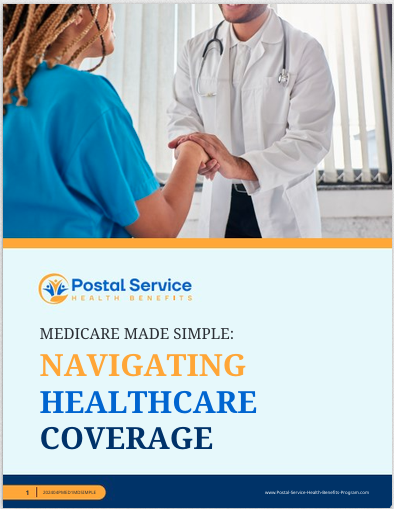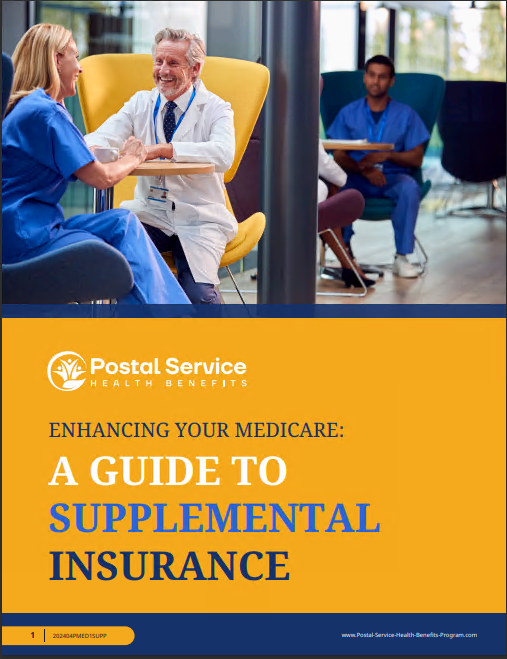Key Takeaways
- Plan Your Health Coverage Early: Use the PSHB Open Season to explore your health plan choices for the new Postal Service Health Benefits program. Understand the differences from FEHB to make the best decision for 2025.
- Medicare Considerations Matter: For Medicare-eligible Postal retirees, certain new PSHB rules affect Medicare Part B enrollment, so review requirements to avoid coverage disruptions.
What’s Changing in Postal Health Coverage?
As we kick off this year’s Open Season, there’s an important shift in health coverage for postal employees and retirees. The new Postal Service Health Benefits (PSHB) program is officially taking over from the Federal Employees Health Benefits (FEHB) program starting January 1, 2025. This transition isn’t just a name change—it brings in new coverage rules, timelines, and options, especially for Medicare-eligible retirees.
If you’re a current FEHB enrollee, don’t worry. You’ll be automatically enrolled in a comparable PSHB plan for 2025. But before you rely on that automatic enrollment, you’ll want to dig into your options and make sure your new plan meets your needs. Open Season is the time to make those decisions. Here’s what postal workers, retirees, and eligible family members should keep in mind as they prepare for the PSHB program.
1. PSHB Basics: The New Kid on the Block
With the creation of the PSHB program, postal workers now have a unique healthcare system tailored just for them. PSHB is part of a broader Postal Service overhaul, designed to provide similar (or improved) benefits that FEHB offered but geared specifically to meet the needs of postal employees and their families.
Why PSHB?
FEHB has long been the federal standard for health benefits, but PSHB brings certain advantages that align more directly with postal employees’ needs. PSHB aims to be easier to manage, providing coverage that coordinates well with Medicare and ensuring the Postal Service has a program reflecting its unique workforce.
Automatic Enrollment—Is It Enough?
If you’re currently enrolled in FEHB, you’ll be automatically shifted to a similar PSHB plan at the start of 2025. But automatic enrollment doesn’t necessarily mean it’s the right plan for you. Open Season gives you the chance to compare different options and choose the best fit for your situation.
2. Open Season: Your Time to Choose
PSHB Open Season will run from November 11 to December 9, 2024. During these four weeks, all postal employees, retirees, and eligible family members can enroll in or make changes to their health plan. Any decisions made during this period take effect on January 1, 2025.
Deadlines Matter
The Open Season timeline is short, so plan accordingly. Missing this window means you’ll be automatically enrolled in the preselected PSHB plan for 2025 if you’re currently enrolled in FEHB. Be proactive—review your options early to avoid missing out.
3. Understanding Your Plan Options
The PSHB program offers a variety of health plans. While these may resemble previous FEHB options, it’s essential to remember that PSHB is a new program, so plan details and structures might differ.
Plan Types
There are several types of health plans under PSHB, similar to what you might expect in FEHB:
- Health Maintenance Organization (HMO): A more localized option, where you typically choose providers within a network for lower out-of-pocket costs.
- Preferred Provider Organization (PPO): A flexible plan offering a network of preferred providers, with options to go out-of-network at a higher cost.
- High Deductible Health Plans (HDHP): These plans have higher deductibles but can be paired with health savings accounts (HSAs) for tax-advantaged savings.
Choosing the right plan comes down to your personal needs. Do you need out-of-network options, or are you comfortable sticking with in-network providers? Consider what you use most in a healthcare plan, whether it’s regular doctor visits, specialist appointments, or prescriptions.
4. Medicare Coordination: New Requirements for Some Retirees
One of the most significant changes with PSHB is its coordination with Medicare for eligible retirees and their family members. If you or your spouse are Medicare-eligible, understanding this aspect is essential.
Medicare Part B Enrollment Requirement
Certain Medicare-eligible Postal Service annuitants and their family members will need to enroll in Medicare Part B to keep their PSHB coverage. However, if you retired before January 1, 2025, and aren’t already enrolled in Part B, you’re exempt from this requirement.
This requirement could impact your premiums and deductibles, so assess if enrolling in Part B will be beneficial or necessary for your situation. Medicare Part B, in coordination with PSHB, can reduce your out-of-pocket healthcare costs, but the decision requires a close look at your personal financial and health needs.
Weighing Costs and Coverage
If you’re newly required to enroll in Medicare Part B, it’s worth looking at both the cost of Part B premiums and how it interacts with PSHB coverage. In many cases, Medicare combined with PSHB provides comprehensive coverage with reduced out-of-pocket expenses, but every case varies. It’s best to contact your benefits coordinator or consult your retirement office for help with Medicare enrollment questions.
5. How PSHB Benefits Compare to FEHB
In general, PSHB aims to match the quality of coverage provided by FEHB, but the two aren’t identical. Here are some potential distinctions:
- Premium Costs: While we don’t yet know how premium costs will fluctuate with PSHB, generally, the Postal Service is focusing on keeping costs in line with FEHB standards.
- Plan Choices: PSHB offers a similar range of plan types as FEHB, but since it’s tailored to postal employees, certain specifics may be adjusted.
- Medicare Coordination: FEHB covered both Medicare-eligible and non-Medicare retirees, but PSHB emphasizes Medicare Part B enrollment for eligible members. This new rule changes the landscape, particularly for those nearing 65 or who are already Medicare-eligible.
The Postal Service Health Benefits program is focused on maximizing coverage at a reasonable cost, but every enrollee will need to weigh their priorities to find the best fit.
6. Planning Ahead: Don’t Wait Until the Last Minute
It’s easy to wait until the last week of Open Season, but with this year’s significant change, that could leave you feeling rushed or uninformed. Here’s a quick checklist to help you prepare:
- Review the PSHB Options: Get familiar with each plan and determine what matters most to you. Out-of-pocket costs, deductibles, and provider networks are great places to start.
- Consider Medicare Part B: If you or a family member are Medicare-eligible, look into whether Part B enrollment will be required for you to maintain PSHB coverage.
- Use Online Tools: Use any online tools or resources provided to compare plan options side-by-side. These tools simplify the process, helping you visualize cost differences.
Taking your time with these steps will give you peace of mind heading into 2025, ensuring that your health coverage is exactly what you need.
Navigating the Future of Postal Health Coverage
With Open Season underway, make sure your new PSHB coverage aligns with your current needs and future plans. The change from FEHB to PSHB represents an opportunity to explore new options and potentially save on healthcare costs, especially if you’re coordinating with Medicare. Use this Open Season to review your choices carefully and prepare for 2025.







